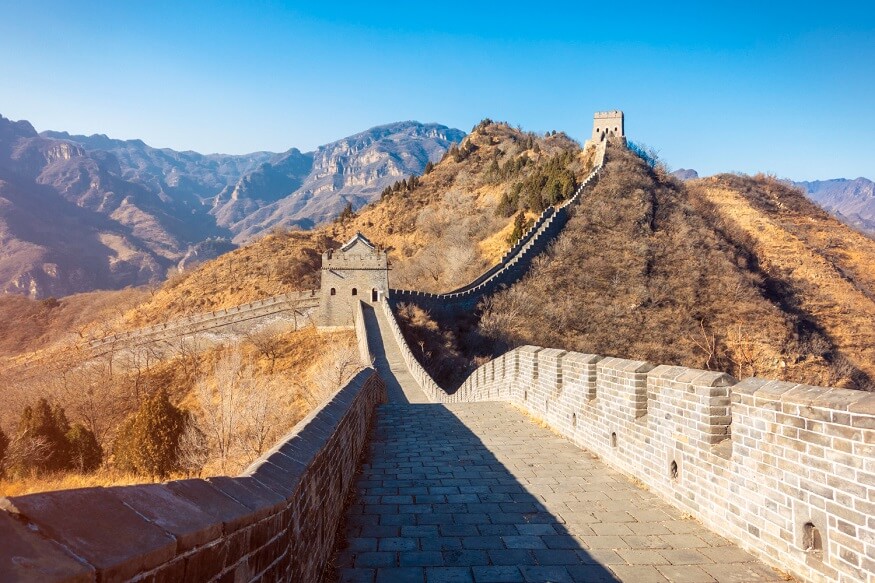
The Great Wall of China stands as a monumental symbol of human ambition and ingenuity. This colossal structure, stretching for thousands of miles across diverse landscapes, is not just a physical barrier but a testament to the enduring spirit of the Chinese people. It has served as a protective shield, a cultural icon, and a source of national pride for centuries.
This article delves into the fascinating history, construction, military significance, cultural impact, and modern-day allure of the Great Wall of China. We’ll explore its origins, the challenges faced by builders, its role in defending Chinese borders, and its enduring legacy as one of the world’s most recognizable landmarks.
The Great Wall of China’s History
The construction of the Great Wall wasn’t a single event but a series of projects spanning centuries. Early sections were built during the Warring States period (475-221 BCE) by various states to defend their territories. These initial walls, often made of rammed earth and stone, were relatively short and unconnected.
The first emperor of a unified China, Qin Shi Huang, in the 3rd century BCE, ordered the connection and fortification of these existing walls, creating a more cohesive defense system. This marked the beginning of the Great Wall as we know it today. Subsequent dynasties, including the Han, Sui, and Ming, continued to expand and reinforce the wall, adapting its design and materials to meet evolving military needs.
The Ming Dynasty (1368-1644) is credited with constructing the most extensive and recognizable sections of the Great Wall. They used brick and stone, creating imposing watchtowers and fortified passes that remain impressive even today. The Ming dynasty’s focus on defense against nomadic tribes from the north led to a significant expansion and strengthening of the wall during this period.
Construction and Design

Building the Great Wall was an immense undertaking, requiring vast resources and manpower. Millions of laborers, often conscripted peasants, worked tirelessly under harsh conditions. They hauled materials, dug trenches, and laid bricks, enduring backbreaking labor and facing constant danger from wild animals and treacherous terrain.
The wall’s design varied depending on the location and purpose. In mountainous regions, it followed natural contours, while in flatter areas, it was built as a straight or slightly curved barrier. Watchtowers were strategically placed along the wall at intervals, providing observation points and allowing for communication between different sections.
Materials Used
The materials used in construction also varied depending on availability and purpose. Rammed earth, a mixture of soil and gravel compacted together, was commonly used in early sections. Later, bricks made from fired clay became more prevalent, offering greater durability. Stone was often incorporated into the structure for added strength and stability, particularly in areas prone to earthquakes or landslides.
Military Significance
The Great Wall’s primary purpose was military defense. It served as a formidable barrier against invading armies, slowing their advance and providing time for Chinese forces to mobilize. The wall’s height and length made it difficult to scale, while its watchtowers allowed for early detection of enemy movements.
Strategic Importance
The wall’s strategic importance extended beyond physical barriers. It facilitated communication and troop movement along its length, allowing for rapid response to threats. Passages through the wall were controlled points, enabling the Chinese to regulate trade and monitor movement in and out of their territory.
Cultural Impact

Beyond its military function, the Great Wall has had a profound cultural impact on China. It has become a symbol of national unity, strength, and resilience.
Artistic Inspiration
The wall has inspired countless works of art, literature, and music throughout Chinese history. Its imposing presence has been depicted in paintings, sculptures, poems, and operas, reflecting its enduring significance in the collective imagination.
Visiting the Great Wall
Today, the Great Wall is a popular tourist destination, attracting millions of visitors each year. Several sections are open to the public, offering breathtaking views and a glimpse into China’s rich history.
Popular Sections
Some of the most popular sections include Badaling, Mutianyu, and Jinshanling. Each offers unique experiences, from well-preserved Ming Dynasty fortifications to challenging hikes through rugged terrain. Visitors can explore watchtowers, walk along restored sections, and learn about the wall’s construction and history at on-site museums.
Conclusion
The Great Wall of China stands as a testament to human ingenuity, perseverance, and cultural heritage. Its immense scale, intricate design, and enduring legacy continue to captivate and inspire people worldwide. As one of the tallest walls in the world, it serves as a reminder of the power of collective effort and the lasting impact of human endeavors on the landscape.
